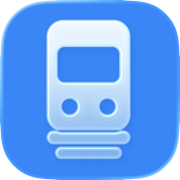Why Most Transit Apps Are So Cluttered (And What We're Doing Differently)
Popular transit apps pack in social features, ads, and endless options. But when you're rushing to catch a train, simplicity beats features every time.
Open any popular transit app today and you'll be greeted with a dizzying array of features: user photos, community reports, social sharing, trip planning, bike routes, walking directions, restaurant recommendations, and banner ads scattered throughout.
It's understandable why these features exist—each one serves someone's needs. But for the daily commuter who just wants to know "when is my train coming?", this feature creep creates a frustrating experience.
The Economics of Feature Creep
Most transit apps face the same challenge: how do you monetize essential public information that should arguably be free?
The common solutions create the clutter we see today:
- Advertising revenue – Banner ads, sponsored content, and location-based promotions
- Data collection – Tracking user behavior to sell insights or targeted advertising
- Premium subscriptions – Adding features to justify subscription tiers
- Partnership integrations – Bike sharing, ride sharing, food delivery tie-ins
Each revenue stream adds complexity to the interface. What starts as a simple "show me train times" app becomes a lifestyle platform.
When Features Become Friction
Consider the typical user journey in a popular transit app:
- Open app (wait for ads to load)
- Dismiss location sharing prompt
- Navigate past social features to find your station
- Scroll past user-generated content and alerts
- Finally see train times (often with more ads)
Compare this to looking at a physical departure board: you walk up, scan for your line, and see the times. No friction, no distractions.
The Commuter's Dilemma
When you're rushing to catch a train, every extra tap, every loading screen, every popup becomes a source of stress. The irony is that apps designed to make transit easier often make the experience more complicated.
The Social Features Nobody Asked For
Many transit apps have added social features—user reports, photos, comments, and community-driven updates. While well-intentioned, these features often create more noise than signal for regular commuters.
Problems with crowdsourced information:
- Inconsistent quality – User reports range from helpful to completely inaccurate
- Information overload – Too many opinions about the same delay
- Outdated content – Reports about issues that were resolved hours ago
- Interface clutter – Social features take up screen real estate
Our Different Approach
At MyCityRail, we started with a simple question: what if a transit app worked like a departure board?
This led to some core design principles:
- Official data only – Real-time feeds from MTA, TfL, and Auckland Transport
- No ads – Clean interface funded by straightforward subscriptions
- Essential features only – Favorites, widgets, and service alerts
- Fast loading – Optimized for quick glances, not extended browsing
- Privacy-focused – No tracking, no data collection beyond what's needed
The Psychology of Calm Design
Commuting is inherently stressful. You're often in a hurry, dealing with crowds, and managing complex schedules. Your transit app shouldn't add to that stress.
Good transit app design should feel like:
- Predictable – Same information, same place, every time
- Fast – Information appears immediately when you need it
- Focused – Only the details that affect your journey
- Reliable – Consistent performance during rush hour
The Trade-offs We Accept
Choosing simplicity means accepting some limitations:
- No trip planning across multiple cities
- No social features or community reports
- No integration with ride-sharing or food delivery
- Limited to the three cities we do well
But for daily commuters in New York, London, or Auckland, these trade-offs result in a faster, cleaner experience.
Experience Clean Transit Design
See what happens when you remove the clutter and focus on what matters.

7-day free trial • No ads • Privacy-focused
The Future of Transit Apps
We believe the future of transit apps isn't about adding more features—it's about doing fewer things exceptionally well.
As public transit systems improve their real-time data and cities become more connected, the opportunity exists to create tools that truly serve commuters rather than advertisers or engagement metrics.
Sometimes the best user experience comes from knowing what to leave out.
 MyCityRail
MyCityRail